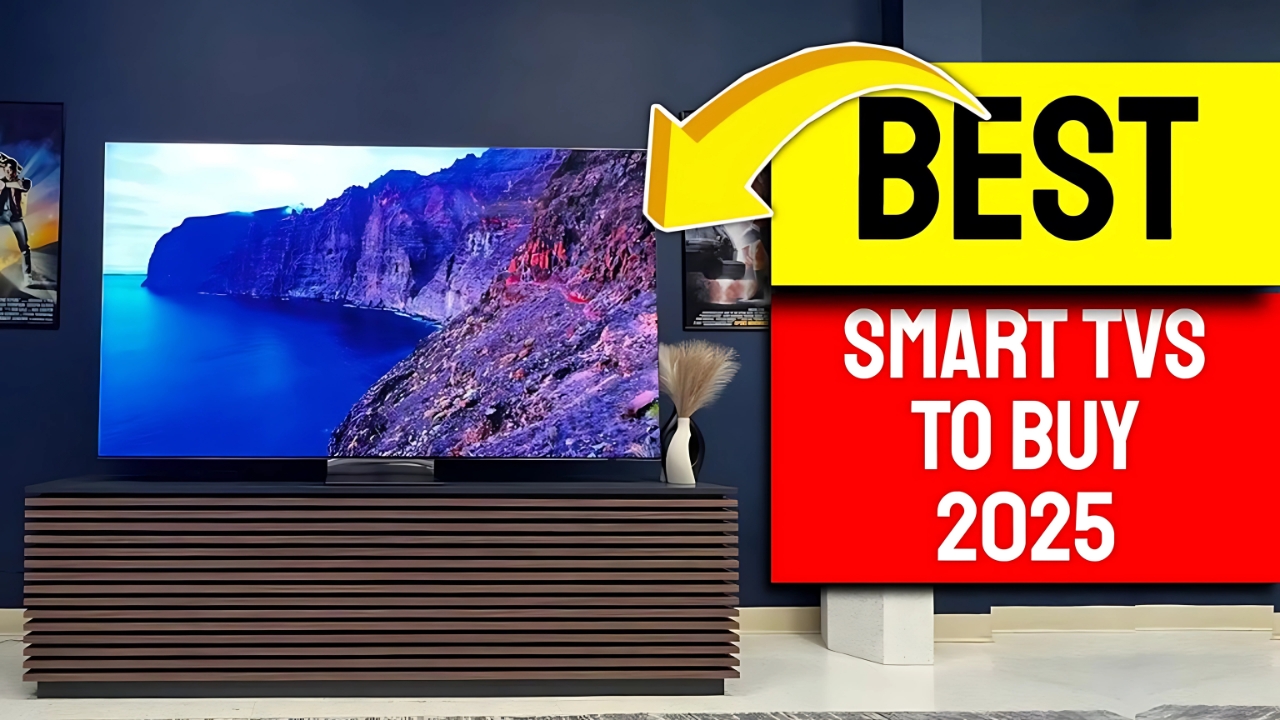Smart televisions have revolutionized home entertainment, transforming traditional viewing into interactive, connected experiences. The US Smart TV Market is expected to reach 50.73 million units in 2025 and grow at a CAGR of 2.29% to reach 56.81 million units by 2030. With numerous brands competing for market dominance, choosing the right smart TV can be overwhelming. This comprehensive guide analyzes the leading smart TV manufacturers to help you make an informed decision.
Top Smart TV Brands Overview
Samsung: Market Leader with Innovation
Samsung is the leader in the global television (TV) set market with a share of 19.6 percent in terms of sales volume in 2022. The South Korean giant continues to dominate with its advanced display technologies, including Neo QLED and QLED panels. Samsung’s Tizen operating system provides seamless integration with streaming services and smart home devices.
Key Features:
- Neo QLED technology with mini-LED backlighting
- Quantum Dot display technology
- Gaming features with 4K@120Hz support
- Comprehensive smart home integration
LG: OLED Excellence and webOS Innovation
LG Electronics has established itself as the premium OLED specialist. LG OLED TV has been ranked No.1 selling OLED TV Brand for 11 consecutive years by Omdia. The company’s webOS platform consistently receives praise for its user-friendly interface and extensive app ecosystem.
Standout Features:
- Industry-leading OLED technology
- webOS smart platform
- Dolby Vision and Dolby Atmos support
- Alpha processors for enhanced picture quality
Sony: Premium Picture Processing
Sony leverages its entertainment industry expertise to deliver exceptional picture quality through advanced processing technologies. The brand focuses on color accuracy and motion handling, making it popular among enthusiasts and content creators.
Notable Advantages:
- XR Cognitive Processor technology
- Excellent upscaling capabilities
- Google TV integration
- Cinema-grade color reproduction
TCL: Value Champion with Premium Features
TCL offers impressive value propositions, with models like the QM7K Mini-LED providing excellent performance at competitive prices, making it a great choice for budget-conscious consumers seeking premium features.
Hisense: Emerging Technology Leader
Hisense has rapidly gained market share by offering advanced technologies at accessible price points. Models like the U8N and U7N have received excellent reviews for their brightness, gaming features, and overall value proposition.
Smart TV Technology Comparison Table
| Brand | Display Technology | Smart Platform | Market Share | Price Range | Key Strengths |
|---|---|---|---|---|---|
| Samsung | QLED, Neo QLED | Tizen | 19.6% | $500-$8,000 | Gaming, Brightness |
| LG | OLED, NanoCell | webOS | 13.8% | $600-$6,000 | OLED Quality, UI |
| Sony | LED, OLED | Google TV | 8.1% | $700-$5,000 | Processing, Color |
| TCL | Mini-LED, QLED | Roku/Google TV | 11.2% | $300-$3,000 | Value, Features |
| Hisense | ULED, Mini-LED | VIDAA | 9.8% | $250-$2,500 | Price, Innovation |
Source: Market share data from Statista Global TV Market Report 2022
Government Standards and Regulations
The Federal Communications Commission (FCC) regulates television broadcasting standards under the Communications Act of 1934, ensuring all TV manufacturers comply with technical and safety requirements. These regulations cover aspects from electromagnetic interference to accessibility features.
For detailed information about television standards and regulations, visit the official FCC Television Guidelines.
Current Market Trends
4K and 8K Adoption
In Q1 2024, 4K TVs accounted for 70% of total TV sales, while 8K TVs saw a 30% increase in sales compared to the previous year. This trend reflects consumers’ desire for higher resolution content and future-proofing their entertainment systems.
Streaming Integration
TV streaming made up 38.7% of the market’s share in July 2023, with popular platforms like YouTube (9.2%), Netflix (8.5%), and Hulu (3.6%) driving this growth.
Smart Platform Preferences
Android TV led with 31.4 million units shipped, followed by WebOS with 18.2 million units, showcasing the importance of operating system choice in consumer decisions.
Making the Right Choice
When selecting a smart TV brand, consider your specific needs:
- For Gaming: Samsung and LG offer superior gaming features
- For Movies: Sony and LG provide exceptional picture quality
- For Budget: TCL and Hisense deliver excellent value
- For Premium Experience: Samsung and LG lead in luxury features
Consider these factors:
- Room lighting conditions
- Viewing distance and screen size
- Budget constraints
- Smart platform preferences
- Future technology needs
Frequently Asked Questions
Q: Which smart TV brand offers the best value for money?
A: TCL and Hisense consistently provide excellent value, offering premium features like Mini-LED backlighting and gaming capabilities at competitive prices.
Q: Are OLED TVs worth the extra cost?
A: OLED TVs offer superior contrast and deeper blacks, making them ideal for dark room viewing and movie enthusiasts willing to invest in premium picture quality.
Q: How important is the smart TV platform?
A: The smart platform significantly impacts user experience. Popular choices include Samsung’s Tizen, LG’s webOS, and Google TV, each offering unique advantages.
The smart TV landscape continues evolving rapidly with new technologies and features. The global smart TV market is expected to grow at a CAGR of 12.8% from 2025 to 2030, reaching USD 451.26 billion by 2030. Whether you prioritize picture quality, gaming features, or budget considerations, understanding each brand’s strengths helps ensure you choose the perfect smart TV for your entertainment needs.
